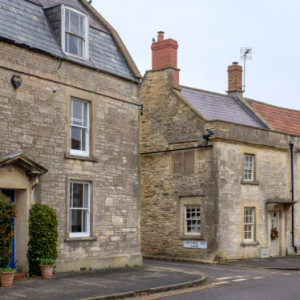Along Touching End Lane in Marshfield
Early this morning I drove Helena and her great friend J. to Bristol Airport arriving at 0930. They were heading for the west coast of Scotland via a flight to Glasgow, to spend Christmas with Helena’s mum and some of her family. I madly waved at them as they passed me in the Shuttle Bus from the remote car park, having waited to check they got picked up safely. This seemed the best way to avoid paying extortionate fees for simply driving up and dropping them off at the airport itself.
I then headed off to a rendezvous with my sister who is still sheltering herself from Covid exposure at her home in Calne, Wiltshire, as she feels very vulnerable because of a long standing health issue. We were able to swap Christmas presents and at least have a brief catch-up before I headed home on the third side of the triangular journey.
On the route to Calne, I got involved in a terrible snarl-up of traffic in the middle of Chippenham, resulting from my having taken the signposted direct route to Calne rather than the lengthy by-pass. I shall not forget.
But at least I had time to have a short detour into the delightful village of Marshfield a few miles north of Bath, to which I’d been taken many years ago by our friend Camilla. She was born and lived there as a child for a while. I was then given a wonderfully vivid guided tour. Today I just halted on the High Street a little to the west of the old market square and main hotel.
Marshfield has a rich history, with early prosperity from the sheep industry in the 14th century, later overtaken by the growth of malt production in the 18th century. It has many fine buildings, including St. Mary’s Church, reconstructed in the 15th century, the early 17th almshouses, one late 17th and one 18th century public house. Many private residences date from the 18th century and some have much older origins within the structure of the buildings.
My main picture is of Touching End Lane, a side road running north off the High Street allowing access to the farms and workshops between it and ‘Back Street’. Many of the properties were burgesses and had important land and buildings running back from their high street frontages, as shown by this building. The next picture shows part of the frontage of the building looking eastwards showing other styles of building.
The third picture looks south-west across the road from the same spot. I think it is a very interesting building showing the rear extension as well as the varied levels of its construction. All of the buildings show slightly different types of Cotswold stonework evidencing the styles of their individual eras and thee variety of stone available locally at the time. Different local quarries would have produced different qualities of stone and with varying colours, as they became worked out.
I hope you like their charm as much as I do.
The final image is of a sculpture I spotted in a field beside the road from Calne to Wootton Bassett. I had to stop to record it for a few blip friends who are keen motorcyclists. I think it will amuse them. The whole ‘motorcycle’s’ structure is made from elements of scaffolding ironwork, a very twentieth century material.




Comments
Sign in or get an account to comment.


